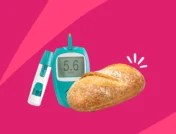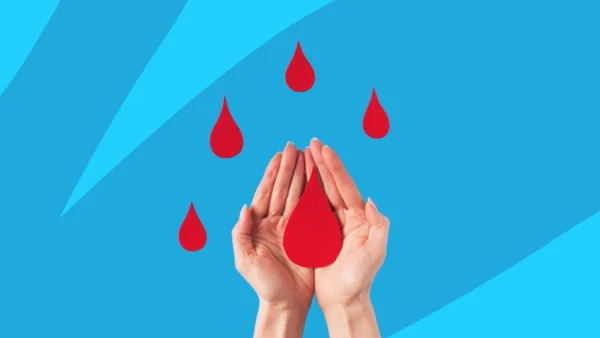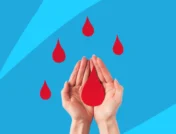LGBTQ+ stands for lesbian, gay, bisexual, transgender, and queer or questioning. It may also describe other non-straight, non-cisgender people. This community of individuals shares many of the same health needs as everyone else. However, some LGBTQ+ people have unique experiences that may require personalized healthcare services.
Whether you are a member of this community or you care about someone who is, this guide can be a good place to start to find the perfect healthcare team and the solutions available today.
Importance of specialized LGBTQ+ care
Healthcare for LGBTQ individuals has a complicated past: At one point, anything other than heterosexuality was labeled a diagnosable “illness.” But today, there are specialized care centers that accept LGBTQ+ people as valued members of society with distinctive health and wellness concerns.
Despite positive efforts by policymakers and the medical community, there’s still work to be done to provide a welcoming environment for LGBTQ patients of all ages. Although access for LGBTQ individuals has improved, discriminatory attitudes from healthcare providers can compromise the quality of healthcare they receive. In addition, negative past experiences have made some LGBTQ individuals reluctant to seek care, especially when they’ve needed it most.
Unique health risks for LGBTQ+ people
Because not all LGBTQ+ people feel comfortable sharing their sexuality or identity with others, they may be reluctant to share details of their lives that could affect their health care. However, without a complete understanding of an individual’s life and circumstance, healthcare practitioners may not be able to address the unique health challenges they face.
One risk that can significantly disrupt an LGBTQ+ person’s life, which may be hard to talk about, is sexual and intimate partner violence.
Sexual and intimate partner violence
Any violence between two people in a close relationship counts as intimate partner violence, including physical violence, sexual violence, threats, and emotional abuse. When someone is subjected to sexual activity against their will, it is considered sexual violence. It can include rape or unwanted touching, as well as harassment, taking nude photos, and threats.
According to the CDC, bisexual women are disproportionately affected by intimate partner violence, with 61% experiencing sexual violence, physical violence, or stalking by an intimate partner at least once in their lifetime compared to 35% of heterosexual women having the same experiences.
48% of bisexual women versus 28% of heterosexual women who have been raped experienced their first incident between ages 11 and 17. Additionally, 37% of bisexual women, compared to 16% of heterosexual women, have been stalked.
Bisexual and gay men are more likely to experience sexual violence other than rape than heterosexual men, with 40% of gay men and 47% of bisexual men being harmed compared to 21% of heterosexual men.
Specific health concerns for cisgender gay and bisexual men
Men who have sex with other men have all of the same health risks as the general male population, including heart disease and certain types of cancers. Because of this, men should get regular checkups and be tested for high blood pressure, cholesterol, and blood sugar levels.
Cisgender gay and bisexual men also experience elevated risks of the following health issues:
- Anal, colon, testicular, and prostate cancers
- Sexually transmitted diseases (STDs), including HIV, syphilis, hepatitis A, B and C, chlamydia, and gonorrhea
- Mental health disorders, including depression, anxiety, and body image issues
Regular testing and vaccinations can prevent many health conditions, including human papillomavirus (HPV), hepatitis A, and hepatitis B. Talking to a healthcare provider about individual risks can be useful for developing a plan that’s appropriate for each person.
Using protective methods during sex is the best way to prevent getting an STD or transmitting it to others, but preventive options, such as PrEP or PEP, may also help reduce the risk.
PrEP, or pre-exposure prophylaxis, can be taken every day by HIV-negative adults to reduce the risk of getting HIV by up to 99%. PEP, or post-exposure prophylaxis, can be taken after possible HIV exposure as an emergency treatment, and it’s most effective when taken within 72 hours after exposure.
Specific health concerns for cisgender lesbian and bisexual women
Heart disease is the top cause of mortality for all cisgender women.
Increased health risks that cisgender lesbian and bisexual women face include:
- Breast cancer and gynecological cancers
- Substance abuse, including smoking and heavy drinking
- Obesity
- STDs
Letting a healthcare provider know about specific lifestyle habits can be the first step to an open dialogue about health risks. Getting tested regularly for heart disease risk factors, such as high cholesterol, high blood pressure, and diabetes, as well as risk factors for reproductive cancers is important.
Because lesbian and bisexual women can get STDs like other women, regular testing should be part of the health plan. HPV can lead to higher rates of some types of cancers, including cervical cancer, so it’s important to keep up with regular screenings as needed.
This group of women may also be at a higher risk of eating disorders, hormonal imbalances, and mental health stressors. Nutritional guidance, along with a physician-directed exercise program, could prevent some of the unhealthy weight issues that can elevate heart disease risks.
Specific health concerns for transgender and nonbinary people
Depending on their sex assigned at birth and any gender-affirming care they have received during their lifetime, transgender people may require a wide range of health services for both their sexual or reproductive health and mental well-being. Transgender and non binary people need integrated health solutions. Providers should be able to support any hormone therapy treatment or other gender affirming health and wellness plan and be sensitive to their unique physical, emotional, and mental situation.
Transgender and nonbinary people are also more likely to consider suicide, with some estimates stating 40% of transgender people have attempted suicide at least once. Finding a safe and caring mental health professional who understands the challenges LGBTQ+ people experience is vital to get the support they need.
In order to get the right treatment and care for their health, transgender and nonbinary patients should feel comfortable telling their healthcare provider their entire health history, even if much of it occurred prior to transitioning. If they don’t have this type of open relationship with their current provider, seeking out an LGBTQ+-friendly care clinic may be the best option.
Mental health for LGBTQ+ people
Members of the LGBTQ+ community face not only the usual social pressures of work, school, and family, but also specific challenges that are unique to them. These challenges, such as the need to compete or fit in, can add additional stress to their lives. They may experience strained relationships with family members or loved ones who don’t accept them.
Regardless of the how and why of this stress, it can take a heavy toll. Even though more awareness is being brought to the situation, including through a growing number of advocacy and support groups, the statistics show a disparity, especially in the following areas.
Suicide
The statistics on suicide are higher for the LGBTQ+ population than the general population, with males at especially high risk. Regardless of sexual orientation or identity, males in the U.S. are four times more likely to take their own lives than females, making suicide one of the leading causes of death in males. The limited data available for sexual minorities has been largely focused on younger adults (under 25 years of age) and suggests that around 23% of high school students in this group have had a suicide attempt in the past year compared to almost 6% of heterosexual students.
Studies suggest that 40% of transgender adults have attempted suicide in their lifetime.
Self-harm
Self-harm, or hurting oneself on purpose, is the single highest risk factor for suicide, and it’s something that should be addressed when it presents itself. The U.S. Department of Health and Human Services states that 5% of the overall population engages in self-harm behaviors. A recent study found a significantly higher incidence of self-harm among LGBTQ+ adolescents than their heterosexual peers, with 47% of these students having practiced self-harm versus 23% in the heterosexual group.
Finding help through LGBTQ+ mental health resources
Feelings of hopelessness, the urge to harm yourself or others, or previous attempts to take your life are serious and should be addressed immediately to ensure your safety and security. Calling 911 will get you access to immediate medical help and is the best course of action for life-threatening situations.
If you are not at immediate risk of harm to yourself or others, the 211 line can put you in touch with resources available in your local community for mental health support. Organizations like The Trevor Project focus on mental health awareness and suicide prevention. They have people to talk to for guidance on where to get ongoing help through counseling, medical care, or other treatment measures.
General mental health services may also be helpful, including the 988 Suicide and Crisis Lifeline, which can put you in touch with help right away.
More LGBTQ+ health resources
It can take time to get connected to the right healthcare and wellness advocates, but any one of the following resources may lead LGBTQ+ patients in the right direction when it comes to health.
The Human Rights Campaign Healthcare Equality Index
Look up your provider or see those in your area that meet the Human Rights Campaign’s criteria for compassionate care and inclusion of the LGBTQ+ community and their loved ones.
Musicians Tegan and Sara have created a foundation to help LGBTQ+ girls and women find the resources they need to live healthy lives. The Tegan and Sara Foundation website has tools and articles, along with a “Top 10 Things Lesbians Should Discuss with Their Healthcare Provider” checklist to help get the conversation started at the doctor’s office.
GLMA Health Professionals Advancing LGBTQ Equality
Use the search function to look for providers approved by the GLMA (Health Professionals Advancing LGBTQ Equity). This tool is provided in collaboration with the Tegan and Sara Foundation and Cigna.
Providers of all specialties are included in this vetted list that aims to connect LGBTQ-affirming healthcare professionals with LGBTQ individuals who need care.
With an option to rate and review healthcare providers, this community site makes it easier to connect with an affirming physician in your area.
This organization has put together a comprehensive site for cancer survivors and those seeking cancer-prevention resources, including a provider list, caregiver tools, and community connections to share tips and advice for those with a cancer diagnosis or other concerns.











